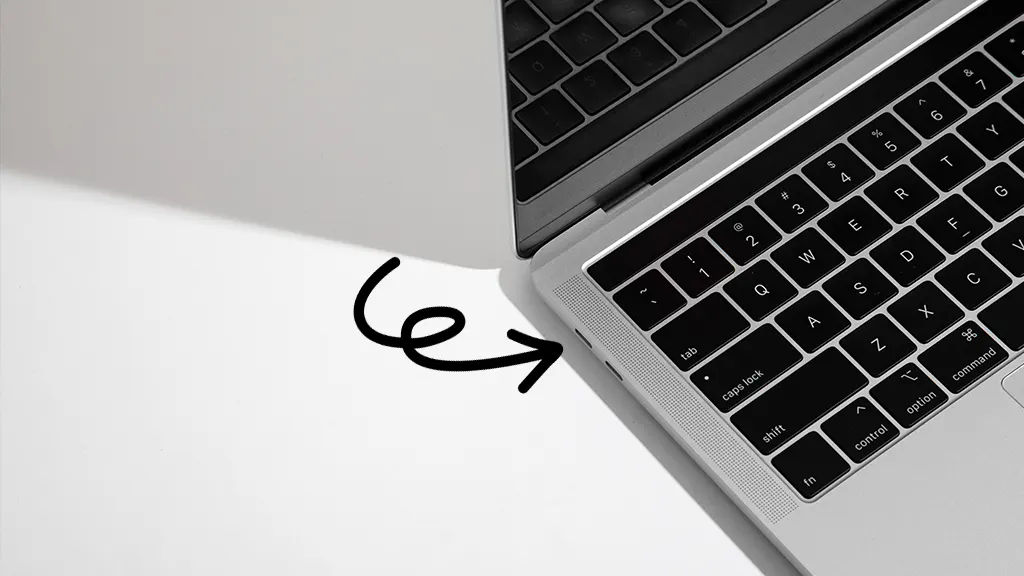Is your MacBook USB-C port not working? Try this

The all-important USB-C port is how your MacBook® charges, transfers data, and connects to accessories, like a printer or an external monitor. Most computers only have one or two of them, so if your MacBook USB-C port isn't working, you'll want to fix it ASAP. We'll walk you through how to do it.
Asurion Experts help millions of customers with tech issues every day—from speeding up a slow Mac® to fixing a broken Mac charger. Here's what to do when your USB-C port isn't working on your MacBook Pro® or MacBook Air®.
Inspect your USB-C port
The USB-C port may be small, but dust and debris can get trapped in there. Grab a bright flashlight or lamp, plus a magnifying glass, and peek into the port. Do you see anything? If you notice debris or dust, you can clean it out with a can of compressed air. If you notice that the inside of the port looks burned, you'll want to take it to MacBook expert to fix it.
Whatever you do, don't use safety pins, paper clips, or other sharp metal objects that can scratch your phone's delicate components or even chip and break off inside the port.
For more tips on cleaning charging ports, read our guide to cleaning out your iPhone® or Android™ charging port (it applies to your Mac as well).

You can’t work when your computer doesn’t want to
Get it repaired fast at one of our stores. Just stop in or make an appointment⎯we'll handle the rest.
Restart your Mac
If your MacBook Pro or Air USB-C port still isn't working, a simple restart could help.
- Click the Apple menu in the top-left corner of your screen.
- Choose Restart. You'll be given the option to automatically reopen your current browser tabs and apps once you restart your computer. In this case, don't select it. Just make sure you've saved everything first.
Run Apple diagnostics
If the port still isn't working, run the built-in diagnostics tool from Apple® to help you figure out if there's a hardware problem. Before you start, you'll want to shut down your computer; remove all external devices except your mouse, keyboard, monitor, Ethernet cable, or connection to power; and make sure your device is on a flat, hard surface with good ventilation. You'll then choose from the following instructions:
If you have a Mac with an Apple silicon chip
- Turn on your computer, continuing to press and hold the Power button as your Mac starts up.
- Release the Power button when you see the startup options window, which includes a gear icon labeled Options.
- Press Command+D on your keyboard.
If your Mac doesn't use Apple silicon
- Turn on your computer and immediately press and hold the D key.
- Release the D key when the Language Options appear or when you see a progress bar.
In both cases, Apple Diagnostics will run a scan for any problems and identify where a defect may be. You'll get one or more Apple Diagnostics reference codes. From this point on, you have a few options:
- Repeat the test by clicking Run the test again or pressing Command+R.
- Restart your Mac by clicking Restart or pressing R.
- Shut down your Mac by clicking Shut Down or pressing S.
Reset the NVRAM
No, that acronym isn't made up. NVRAM stands for non-volatile random-access memory, and it stores different kinds of data, including your volume preferences and time zone information. The USB-C port on your Mac can stop working when the NVRAM is cluttered or outdated. Here's how to reset NVRAM:
- Shut down your Mac.
- Turn it back on and immediately press and hold Option+Command+P+R for 20 seconds.
- Your MacBook will restart with the NVRAM reset and, we hope, your USB-C port will work again.
Reset the SMC
Your Mac's System Management Controller (SMC) determines how your computer manages power. Resetting the SMC can resolve various issues, including one with the USB-C port. There are different ways to reset the SMC, depending on which model you have.
If you have a Mac with an Apple silicon chip
- Restart your computer. This will reset the SMC.
If your Mac has a T2 security chip To find out whether your computer has a T2 security chip, follow these steps:
- Open the Apple Menu.
- Press and hold Option, then click System Information > Controller.
- If you see“Apple T2 Security Chip,: you'll know you the chip is installed.
If your computer does have the T2 security chip, follow these steps:
- Restart your MacBook by going to the Apple menu > Restart.
- As soon as your computer turns on, press Shift+Control+Option on the left side of your built-in keyboard.
- Hold for 10 seconds, then press the Power button and wait 10 seconds again.
- Release all of the keys, wait a moment, then turn on your MacBook.
If you've tried these steps and still need a little help, we're right around the corner. Schedule a repair at the nearest uBreakiFix® by Asurion store and our certified experts can get your device back up and running as soon as the same day.
The Asurion® trademarks and logos are the property of Asurion, LLC. All rights reserved. All other trademarks are the property of their respective owners. Asurion is not affiliated with, sponsored by, or endorsed by any of the respective owners of the other trademarks appearing herein.
- SHARE THIS ARTICLE